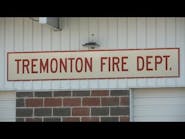As Firehouse Sees It: Is Your Fire Department Critical to the Community?
As summer wrapped up, it was a great honor to attend Wingspread VII in Wisconsin, where fire service movers and shakers gathered to assess today’s fire service and dug deep to address the concerns of the next couple of years. This extremely dedicated group outlined dozens of trends that became an actionable list.
The Wingspread Conference started in 1966. The intent was to meet every 10 years, with a small group putting its focus on existing and future topics that the fire service must be dialed in to. The first meeting was a tremendous success, leading to the creation of the U.S. Fire Administration and the National Fire Academy. In 2016, with ever-evolving technology and the ability for everyone to be plugged in to national and international trends, and with changes happening more quickly, conference leaders decided to meet every five years.
The collective group of firefighters, fire chiefs, researchers and representatives of major fire service organizations took part in in-depth discussions, viewed presentations, and discussed local and national wins and losses. When multiple groups observed the same actions, data sets or personnel or emergency response metrics locally, that issue was raised before the whole of the participants. The collaborative effort outlined 11 statements of national significance to bring forward to the fire service.
Despite the decline in the number of fires, firefighter and civilian injuries and deaths haven’t dropped, and the dollar loss from fire in the United States topped $14.8 billion in 2019. The fire service continues to grow in all-hazards response and mitigation, prompting the group to change the term “fire service” to “fire and emergency services.” The COVID-19 pandemic pushed many fire departments deeper into EMS, shifting involvement to overall public health outreach.
Although fire departments continue to take on more roles inside—and outside— of their community, you aren’t always considered a critical part of your local and regional infrastructure. That concern was echoed often at Wingspread VII. If you question that notion, look at how many departments occupy stations that should be condemned, that use vehicles and equipment that are long past replacement, and that seek donations via “Fill the Boot” campaigns to pay for fuel and insurance.
The final report from Wingspread VII will be distributed by the end of the year. Here is a glimpse into the efforts of the Wingspread VII group:
- Diversity, Equity, Inclusion & Belonging—Departments will look to embrace diversity, equity and inclusion in their ranks and remove hazing and discrimination from the workplace.
- Federal Fire Focus—Funding for federal fire programs has slid; while FEMA grants help, more funding is needed to maintain and deliver service; also, CRR programs must be rolled out across the country.
- Finance/Infrastructure—It’s paramount that fire departments become part of the national critical infrastructure to deliver effective service no matter where help is needed.
- Incident Command System—ICS must expand to help partner agencies handle large- and small-call incidents.
- Member Focus—Recruitment and retention isn’t just for volunteer agencies; career departments have trouble hiring and retaining qualified public servants.
- Operations & Community—This topic was divided into two statements because of the growing mission of fire departments. Departments must be involved at all levels of local government and with nontraditional partners, to develop relationships for risk reduction and to provide enhanced services. Also, departments must become more involved in out-of-hospital services, because fire departments are trusted and see many residents regularly.
- Structural Firefighting—Promote technology to reduce fire injuries, deaths and losses with built-in protection systems.
- Technology & Data—There is a need for real-time, usable data that can make operations effective and efficient.
- Wildland Fire Issues—In the realm of multijurisdictional wildfire events, technology must be accessible by all agencies for suppression, support and notifications.
We’ll chime in more after the report is released. In the meantime, start discussions within your department and region and ensure that your community understands your role in local and national infrastructure.

Peter Matthews | Editor-in-Chief/Conference Director
Peter Matthews is the conference director and editor-in-chief of Firehouse. He has worked at Firehouse since 1999, serving in various roles on both Firehouse Magazine and Firehouse.com staffs. He completed an internship with the Rochester, NY, Fire Department and served with fire departments in Rush, NY, and Laurel, MD, and was a lieutenant with the Glenwood Fire Company in Glenwood, NY. Matthews served as photographer for the St. Paul, MN, Fire Department.






